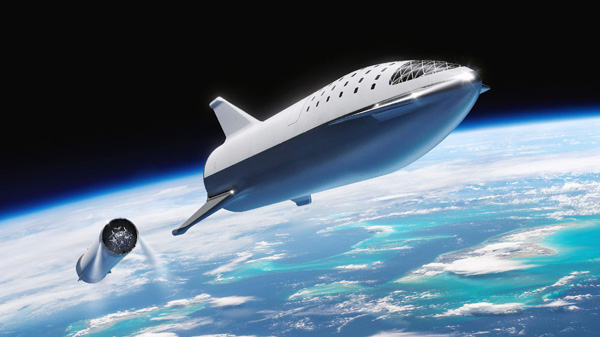
UnEarthed: Where will humanity’s first attempt at space colonisation take place?
Exactly 50 years ago this month, Neil Armstrong, a 39-year-old US astronaut, took a ‘giant leap for mankind’ when he became the first man to set foot on the moon. Since that fateful mission – Apollo 11 – the quest to explore the cosmos has been unceasing. Now, though, if the experts are to be believed, we stand on the brink of a bold new phase – space colonisation.

The first phase of this could see permanent manned bases established on the moon and Mars as early as the 2030s. Already, NASA has plans for a manned expedition to the moon in 2024 – the first since 1972 – and then to put its first man on Mars in 2033. China and a number of European nations, meanwhile, are also considering establishing a lunar base, while Russia expects to stake its own bit of lunar real estate by 2030.
Unlike 50 years ago, this time, the private sector is also keen to join the space race. Heading the pack is serial entrepreneur Elon Musk, whose SpaceX programme has its first manned Mars mission ambitiously scheduled for 2024. This gives him an eight-year lead on Mars One, a Dutch venture that has pencilled in 2032 for its rendezvous with the Red Planet.

But it’s not just financial and political motivations that drive humanity’s mission for space colonisation. It could also need sanctuary. The late astrophysicist Stephen Hawking, a man not known to be overly-alarmist, urged: “The human race only has 100 years before it needs to colonise another planet or face extinction. We are running out of space and the only places to go to are other worlds.” Taking Hawking at his word – and only a fool wouldn’t – where, though, should we be going first?
The Moon
Located 384,000km from our planet, its proximity and the fact that we’ve already successfully landed there make the moon an obvious first destination for human colonisation. It’s an idea given extra credence by the fact that water – essential for human survival – was discovered at the lunar poles by India’s Chandrayaan-1 probe back in 2009.

Taking just a few days to reach, the moon’s proximity would allow near-instant communication with earth, while its lower gravity field – just one-sixth of earth’s – would make it the ideal launch pad for missions to Mars and beyond. And let’s not forget those rare mineral deposits that are just waiting there to be mined.
Despite its attractions, though, the moon is far from an ideal second home for humanity. Its lack of an atmosphere means potentially lethal space radiation and high-intensity solar UV reach its surface unfiltered, while its lack of gravity may adversely affect human physiology in the long term. On top of that, its extreme temperature range – 121°C in sunlight and -156°C in the dark – makes it a far-from-desirable holiday location.

Mars
Located some 54.6 million kilometres away, Mars boasts a nominal gravity field – 38 percent of Earth’s – and a relatively survivable temperature range of -66°C to 20°C. Usefully, it also comes with polar ice caps – essential water sources for any human settlers.
While it’s already on the “to-land” list of several private planet hoppers, including SpaceX and Mars One, NASA’s Mars 2020 rover mission is expected to beat them to the Red Planet by several years. Its priorities include testing a method of producing oxygen from the Martian atmosphere, checking for the presence of various necessary resources (such as sub-surface water), and analysing the weather, dust and other environmental conditions that could adversely affect future human inhabitants.

Europa
While the volatility of Jupiter’s hydrogen-filled atmosphere makes the largest planet in our solar system a less-than-desirable pied-à-terre for exiled earthlings, one of its many moons may have more to offer. Europa – the fourth largest of the planet’s 60 moons – is thought to conceal a vast ocean below its frozen surface, one that could easily provide enough water to sustain a fledgling colony. In addition to that, it could also act as a suitable oxygen supply given a little high-tech tinkering.
Less appealingly, any far-from-home humans would have to contend with its icy surface temperatures, which average a chilly -170°C. Europa is also exposed to 5.4 sieverts of radiation every day – roughly 1,800 times what an earthbound human would have to face in a whole year. Without adequate screening, such exposure would quickly prove lethal.

Proxima Centauri b
Until technological advancements, as yet undreamt of, become a reality, interstellar travel remains wholly impossible. If and when science finds a way to travel the almost-unimaginable distances between stars, where would humanity’s first stop be? In all probability, Proxima Centauri, the closest star to our own sun. Once in its general vicinity, landfall on Proxima Centauri b would seem prudent. The second planet to its sun, it’s the most earth-like planet yet to be stumbled upon by astronomers.
At 4.243 light years away, though, the journey itself remains the biggest challenge. Currently, it will take the Voyager 1 probe – travelling at 17km/s – 73,775 years to reach it. So, settling there would either involve keeping a human crew and cargo in cryogenic stasis for the long journey or discovering a means to facilitate faster-than-light travel, a concept that Einstein himself dismissed as impossible.

Overall, while the concept of space colonisation currently remains a theoretical exercise, it could very quickly become a pressing reality. Given all the challenges, uncertainties and long-term perils involved in finding humanity a new home amid the stars, though, it could transpire that all that effort would be better spent looking after its current place of residence.
Text: Tenzing Thondup
Photos: SpaceX







